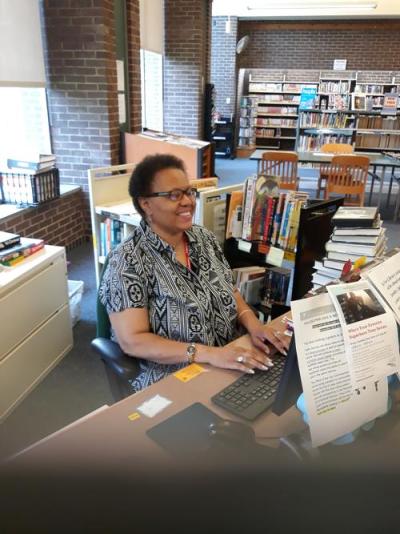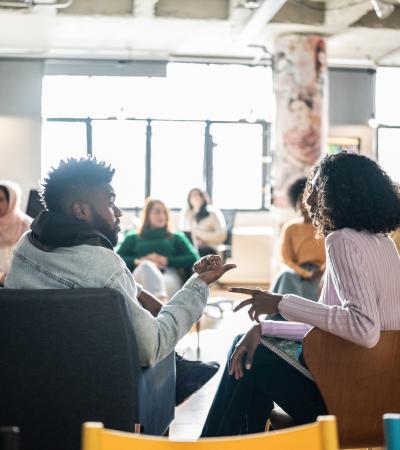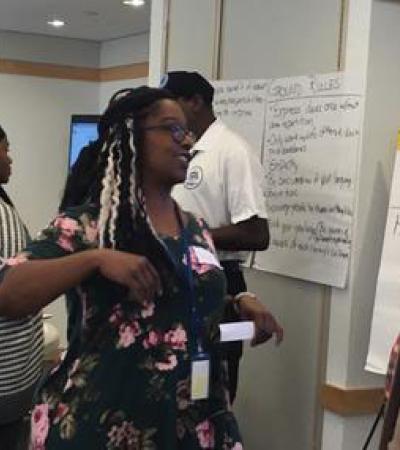Claire L. Hand is an adult/teen librarian at the Free Library of Philadelphia's Wynnefield Library and a participant in Cohort 2 of the Skills for Community-Centered Libraries trainings. Here, she shares how she successfully engaged partners — including a university library, a student group and volunteer retirees — in creating an adult education program.
During library staff’s initial introductions to potential community partners, we chat about our shared visions, commonalities and community goals. Likewise, as we reach out to established community connections, we follow the same script. Afterwards we exchange business cards, email addresses, telephone numbers, send follow-up emails, make follow-up telephone calls and pledge to stay in touch.

Then what?
Attending the Skills for Community-Centered Libraries workshops made me think about ways for our library staff to ignite more lasting relationships with people and organizations.
I invited some of our library’s community partners to participate in the process of developing a program at Wynnefield Library in response to patrons’ requests for adult education services. Librarians from Francis A. Drexel Library at Saint Joseph’s University, student members of Sigma Tau Delta English Honor Society at Saint Joseph’s University and volunteer AARP tutors all strengthened their connections to the Wynnefield Library by working together to develop an adult education program including computer training and tutoring.
I scheduled an initial meeting to introduce the adult education project idea to interested community members. This meeting gave the participants the chance to get to know others in the neighborhood who had shared interests. Three meeting attendees became our program planning team. The team agreed to work collaboratively on this community-based project from program development through implementation.
Team members assumed roles based on their expertise and interests, such as curriculum developer, tutor, researcher and team chair. Everyone agreed to act as program promoter and do outreach. At subsequent meetings, we followed up on our ideas and findings and brainstormed to generate ideas and resolve concerns. The team made decisions on all aspects of program development, considering every team member’s input. The outcome was inspired by people who invested a commitment to a library community project. This summer, we are hosting a computer literacy series for adults and offering academic assistance for adult students.
My communication strategy included scheduled meetings, impromptu visits, emails and telephone calls to keep people interested and involved in the library project. I found that these channels were effective for three main reasons:
- Those who participated in formal discussions and other communication channels expressed that their ideas were valued as important.
- They could share their ideas and collaborate with other community members.
- These channels made opportunities for community partners and librarians to get to know one another and build positive relationships.
I found that when community folks are invested in a project, they are passionate about it. Thus, they promote it more, want it to be successful and take the initiative to help make it work. This kind of engagement can be applied to programming, activities, events and other community endeavors. As my colleagues like to say, "Teamwork makes the dream work." So, inspire the organizations and people who are your library’s assets to "own" the library-community endeavor just like you own your project.
Please share your thoughts, comments and approaches to better engage our communities!



